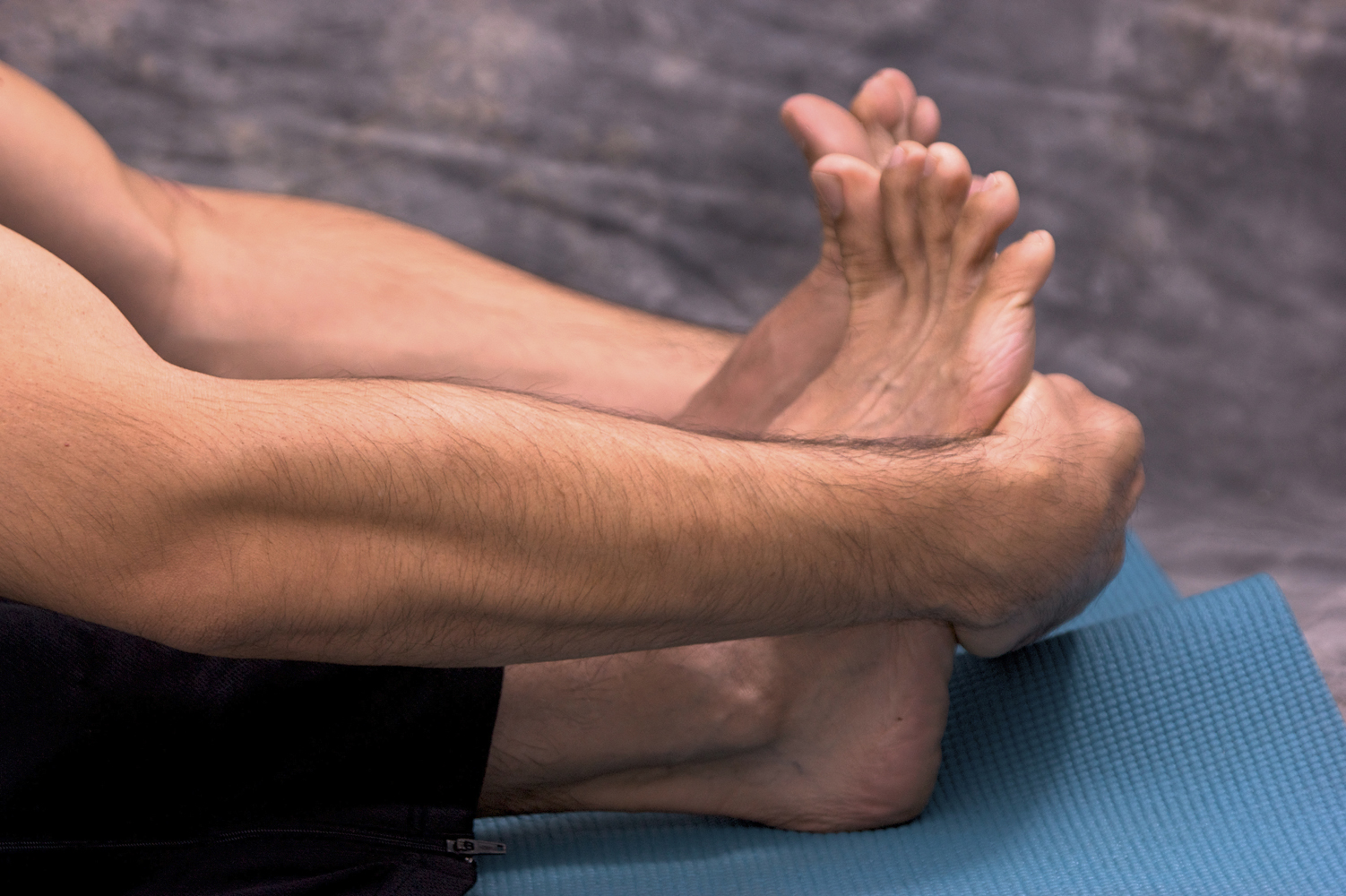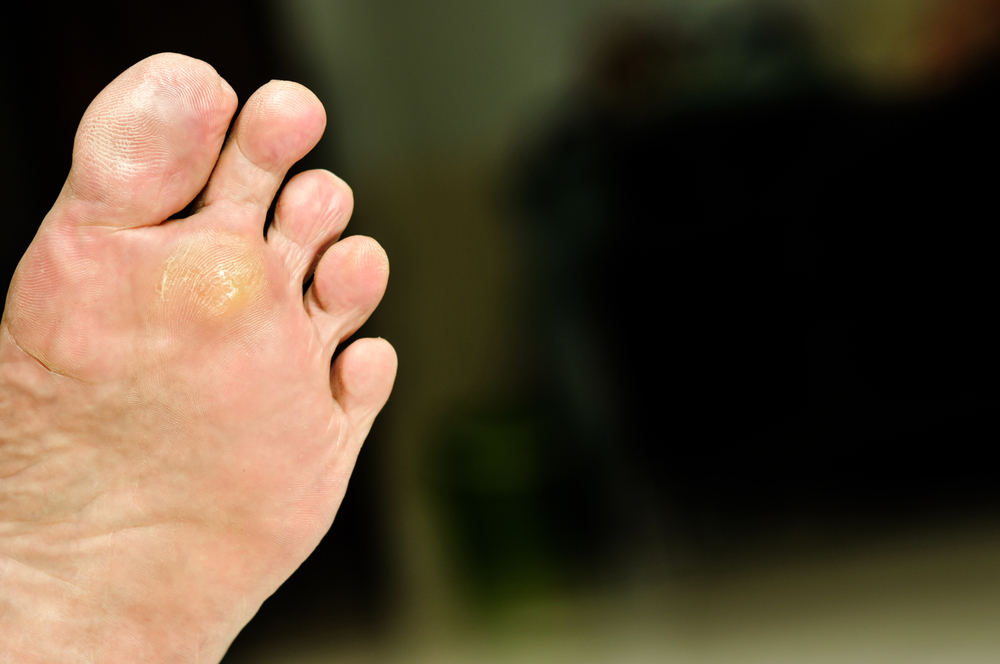November 2024
Exercises for Strong and Pain-Free Feet

Simple foot stretches and exercises promote strength, flexibility, and long-term mobility, helping prevent pain and stiffness. Strengthening and stretching the feet can enhance stability, balance, and endurance, making daily activities easier and reducing the risk of injury. One effective exercise is toe curls which involves placing a small towel on the floor, and using your toes to scrunch it toward you, then pushing it away. This strengthens arch and toe muscles, supporting foot mechanics. Another beneficial stretch is the calf stretch. Stand facing a wall, place one foot forward and the other back, keeping the back heel down and leaning forward slightly. This stretch targets the Achilles tendon and calf muscles, reducing tension in the feet. Incorporating such exercises regularly can keep your feet healthy. If you would like to learn more about how you can take care of your feet, it is suggested that you schedule an appointment with a podiatrist who can diagnose any foot or ankle problem, provide treatment, and guide you to additional foot care.
Why Stretching Is Important for Your Feet
Stretching the feet is a great way to prevent injuries. If you have any concerns with your feet consult with Corinne R. Kauderer, DPM from Dyker Heights Foot & Ankle. Our doctor will assess your condition and provide you with quality foot and ankle treatment.
Stretching the Feet
Stretching the muscles in the foot is an important part in any physical activity. Feet that are tight can lead to less flexibility and make you more prone to injury. One of the most common forms of foot pain, plantar fasciitis, can be stretched out to help ease the pain. Stretching can not only ease pain from plantar fasciitis but also prevent it as well. However, it is important to see a podiatrist first to determine if stretching is right for you. Podiatrists can also recommend other ways to stretch your feet. Once you know whether stretching is right for you, here are some excellent stretches you can do.
- Using a foam roller or any cylindrical object (a water bottle or soda can will do), roll the object under your foot back and forth. You should also exert pressure on the object. Be sure to do this to both feet for a minute. Do this exercise three times each.
- Similar to the previous exercise, take a ball, such as a tennis ball, and roll it under your foot while seated and exert pressure on it.
- Grab a resistance band or towel and take a seat. If you are using a towel, fold it length wise. Next put either one between the ball of your foot and heel and pull with both hands on each side towards you. Hold this for 15 seconds and then switch feet. Do this three times for each foot.
- Finally hold your big toe while crossing one leg over the other. Pull the toe towards you and hold for 15 seconds. Once again do this three times per foot.
It is best to go easy when first stretching your foot and work your way up. If your foot starts hurting, stop exercising to ice and rest the foot. It is advised that you then see a podiatrist for help.
If you have any questions, please feel free to contact one of our offices located in Brooklyn, NY and Old Bridge, NJ . We offer the newest diagnostic and treatment technologies for all your foot care needs.
Flat Feet in Kids and Young Athletes

Flat feet, or fallen arches, are common in children and young athletes, where the arch of the foot collapses, causing the entire sole to touch the ground. This condition can be hereditary or develop because of obesity, lack of muscle tone, or improper footwear. Symptoms often include foot pain, fatigue, and difficulty participating in sports or physical activities. Children may also complain of discomfort in their legs or knees due to altered gait mechanics from flat feet. Treatment typically starts with supportive footwear and custom orthotics to provide better arch support. Stretching and strengthening exercises can also help improve foot function. A podiatrist specializes in assessing and treating flat feet, offering personalized care and guidance for young athletes. If your child is experiencing symptoms of flat feet, it is suggested that you make an appointment with a podiatrist. They can provide an accurate diagnosis and create a tailored treatment plan to enhance your child's athletic performance.
Flatfoot is a condition many people suffer from. If you have flat feet, contact Corinne R. Kauderer, DPM from Dyker Heights Foot & Ankle. Our doctor will treat your foot and ankle needs.
What Are Flat Feet?
Flatfoot is a condition in which the arch of the foot is depressed and the sole of the foot is almost completely in contact with the ground. About 20-30% of the population generally has flat feet because their arches never formed during growth.
Conditions & Problems:
Having flat feet makes it difficult to run or walk because of the stress placed on the ankles.
Alignment – The general alignment of your legs can be disrupted, because the ankles move inward which can cause major discomfort.
Knees – If you have complications with your knees, flat feet can be a contributor to arthritis in that area.
Symptoms
- Pain around the heel or arch area
- Trouble standing on the tip toe
- Swelling around the inside of the ankle
- Flat look to one or both feet
- Having your shoes feel uneven when worn
Treatment
If you are experiencing pain and stress on the foot you may weaken the posterior tibial tendon, which runs around the inside of the ankle.
If you have any questions please feel free to contact one of our offices located in Brooklyn, NY and Old Bridge, NJ . We offer the newest diagnostic and treatment technologies for all your foot and ankle needs.
Plantar Warts Come From a Virus

Warts on the feet, particularly plantar warts, are a common skin condition caused by the human papillomavirus, HPV. These warts occur when the virus enters the skin through tiny cuts, breaks, or weak spots, often on the soles of the feet. This virus thrives in warm, moist environments, making public places like swimming pools, locker rooms, and communal showers prime locations for spreading HPV. Walking barefoot in these areas can increase the risk of contracting plantar warts. Plantar warts often appear as small, rough, and grainy lesions, typically on weight-bearing areas such as the heels or balls of the feet. Unlike other types of warts, plantar warts tend to grow inward due to pressure from walking or standing, which can cause a flat appearance and make them difficult to detect at first glance. These warts may have tiny black dots within them, which are small, clotted blood vessels. If you have this type of wart on your foot, it is suggested that you schedule an appointment with a podiatrist for an accurate diagnosis and treatment.
Plantar warts can be very uncomfortable. If you need your feet checked, contact Corinne R. Kauderer, DPM from Dyker Heights Foot & Ankle. Our doctor will assist you with all of your foot and ankle needs.
About Plantar Warts
Plantar warts are the result of HPV, or human papillomavirus, getting into open wounds on the feet. They are mostly found on the heels or balls of the feet.
While plantar warts are generally harmless, those experiencing excessive pain or those suffering from diabetes or a compromised immune system require immediate medical care. Plantar warts are easily diagnosed, usually through scraping off a bit of rough skin or by getting a biopsy.
Symptoms
- Lesions on the bottom of your feet, usually rough and grainy
- Hard or thick callused spots
- Wart seeds, which are small clotted blood vessels that look like little black spots
- Pain, discomfort, or tenderness of your feet when walking or standing
Treatment
- Freezing
- Electric tool removal
- Laser Treatment
- Topical Creams (prescription only)
- Over-the-counter medications
To help prevent developing plantar warts, avoid walking barefoot over abrasive surfaces that can cause cuts or wounds for HPV to get into. Avoiding direct contact with other warts, as well as not picking or rubbing existing warts, can help prevent the further spread of plantar warts. However, if you think you have developed plantar warts, speak to your podiatrist. He or she can diagnose the warts on your feet and recommend the appropriate treatment options.
If you have any questions please feel free to contact one of our offices located in Brooklyn, NY and Old Bridge, NJ . We offer the newest diagnostic and treatment technologies for all your foot and ankle needs.
Symptoms of a Sprained Ankle

A sprained ankle occurs when the ligaments that support the ankle are stretched or torn, often due to sudden twists, falls, or awkward landings. This common injury can happen during sports, physical activities, or even everyday movements. Symptoms typically include swelling, bruising, pain, and difficulty bearing weight on the affected foot. Initial treatment often includes rest and elevation, which can help reduce swelling and pain. However, if you experience severe pain, significant swelling, or have difficulty walking, it is important to seek medical attention. A podiatrist may recommend imaging tests to assess the severity of the sprain and could suggest a walking boot, targeted exercises, or even surgery, in more severe cases. If you are experiencing persistent symptoms or difficulty moving your ankle, it is suggested you schedule an appointment with a podiatrist for a thorough evaluation and tailored treatment options.
Although ankle sprains are common, they aren’t always minor injuries. If you need your ankle injury looked at, contact Corinne R. Kauderer, DPM from Dyker Heights Foot & Ankle. Our doctor can provide the care you need to keep you pain-free and on your feet.
How Does an Ankle Sprain Occur?
Ankle sprains are the result of a tear in the ligaments within the ankle. These injuries may happen when you make a rapid shifting movement while your foot is planted. A less common way to sprain your ankle is when your ankle rolls inward while your foot turns outward.
What Are the Symptoms?
- Pain at the sight of the tear
- Bruising/Swelling
- Ankle area is tender to touch
- In severe cases, may hear/feel something tear
- Skin discoloration
Preventing a Sprain
- Wearing appropriate shoes for the occasion
- Stretching before exercises and sports
- Knowing your limits
Treatment of a Sprain
In many cases, the RICE method (Rest, Ice, Compression, and Elevate) is used to treat ankle sprains. However, you should see a podiatrist to see which treatment option would work best with your injury. In severe cases, surgery may be required.
It is important to ask your doctor about rehab options after you receive treatment for your injury. Stretching, strength training, and balance exercises may help the ankle heal while also preventing further injury.
If you have any questions, please feel free to contact one of our offices located in Brooklyn, NY and Old Bridge, NJ . We offer the newest diagnostic and treatment technologies for all your foot care needs.








